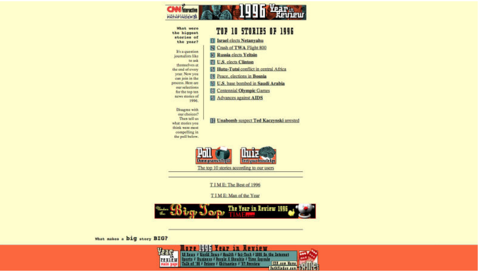History of a Web Designing Part 3:
1996 - The Next Frontier:
Internet users more than doubled in the year 1996 to 36 million users world wide.sing text, images and ads, CNN presented a balanced site design with great usability for the mid 90's. In 1996, we saw the number of websites grow from 25,300 to 257,601. Taking the average user per website from 1908 to 301.
Flash - The New Era in WEB industry:
Flash changed the landscape of website design. For the first time designers could create any shape, add animation and develop more engaging sites than ever before using one single tool. End page would compact all of the information into a single file to be loaded.
The main issue was that not every web user had a Flash plugin installed and Flash sites took much longer to load. The age of Flash brought us splash pages and animated intros.
1998 - The Search Engine in Born:
The internet in 1998 started to look a little more like the internet we see today. Google Beta went live in September 4, 1998. Compare this design to the earlier search engine ALIWEB. Instead of opting for a link filled page, Google chose the minimalistic route. I think we can all agree it worked well for them
Cascading Style Sheets(CSS):
Shortly after the creation of Flash, CSS made it's way onto the scene. As more and more users where going online, speed was becoming a big issue. The thought behind CSS is simple. Separate content and presentation. The content of the site was in HTML and the style of the site would be coded in CSS.
The early struggle for CSS was the result of poor browser support. Luckily it fought through the early years and is still in full use today. CSS may be the most important "language" a web designer needs to know!




No comments:
Post a Comment